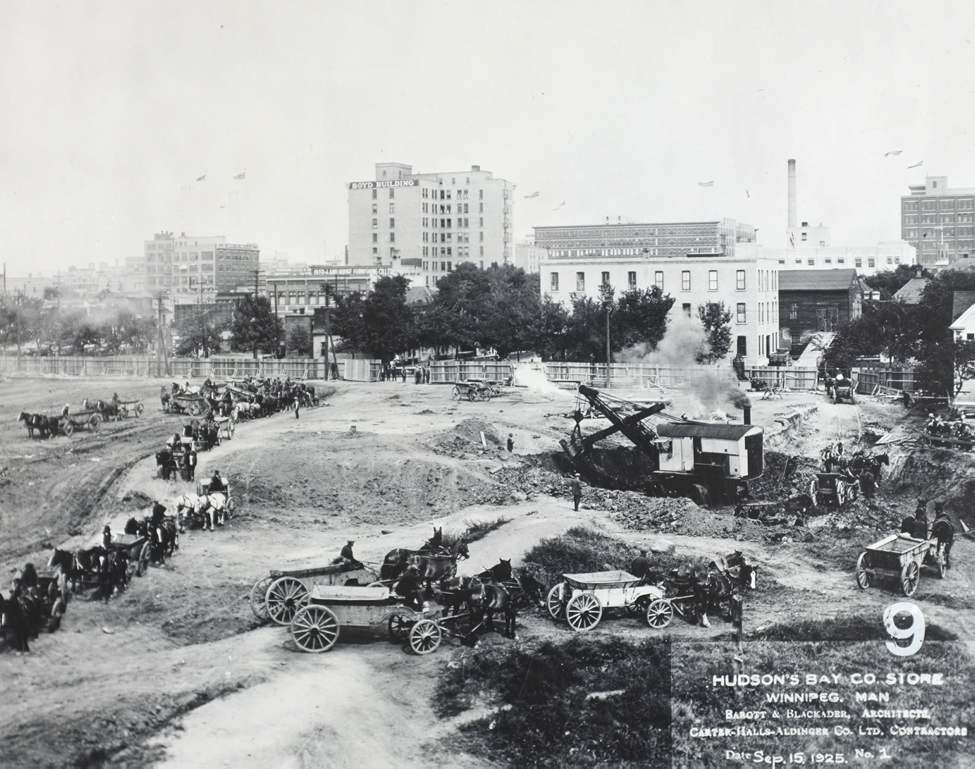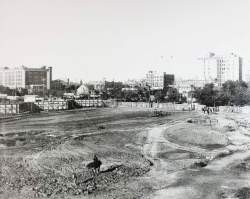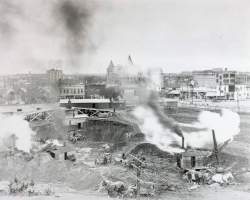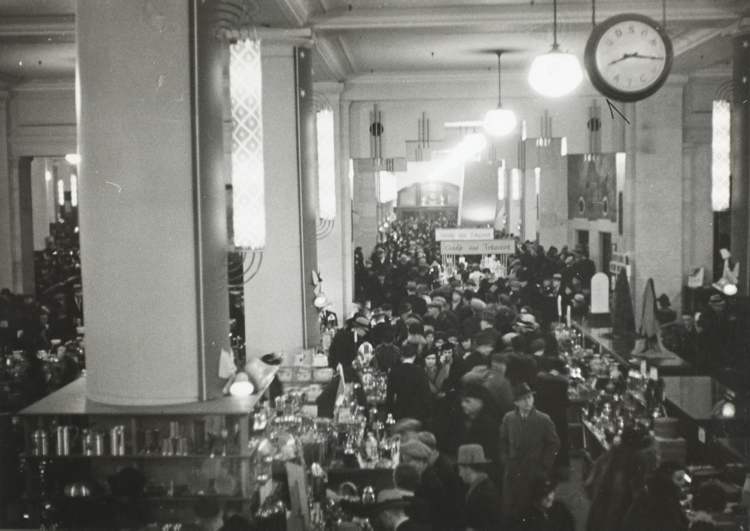Sun sets on downtown Bay days Iconic store part of Winnipeg's 'cultural and historical fabric'
Read this article for free:
or
Already have an account? Log in here »
To continue reading, please subscribe:
Monthly Digital Subscription
$0 for the first 4 weeks*
- Enjoy unlimited reading on winnipegfreepress.com
- Read the E-Edition, our digital replica newspaper
- Access News Break, our award-winning app
- Play interactive puzzles
*No charge for 4 weeks then price increases to the regular rate of $19.00 plus GST every four weeks. Offer available to new and qualified returning subscribers only. Cancel any time.
Monthly Digital Subscription
$4.75/week*
- Enjoy unlimited reading on winnipegfreepress.com
- Read the E-Edition, our digital replica newspaper
- Access News Break, our award-winning app
- Play interactive puzzles
*Billed as $19 plus GST every four weeks. Cancel any time.
To continue reading, please subscribe:
Add Free Press access to your Brandon Sun subscription for only an additional
$1 for the first 4 weeks*
*Your next subscription payment will increase by $1.00 and you will be charged $16.99 plus GST for four weeks. After four weeks, your payment will increase to $23.99 plus GST every four weeks.
Read unlimited articles for free today:
or
Already have an account? Log in here »
Hey there, time traveller!
This article was published 02/10/2020 (1896 days ago), so information in it may no longer be current.
In February, just five years shy of its 100th anniversary, the Portage Avenue Bay store, the mammoth icon of a bygone era of downtown department store shopping, will shut down for good.
HBC’s decision to close the 650,000-square-foot store at Portage Avenue and Memorial Boulevard — twice the size of the Winnipeg Ikea store — won’t come as a surprise to most people in the city.
Over the years, the company has closed some of the store’s six floors and its basement, consolidating stock on just two levels. Last year a company-wide valuation of HBC’s real estate holdings valued the downtown Winnipeg building at precisely $0.

“The decision to close this store was a difficult one,” said Iain Nairn, president and CEO, Hudson’s Bay Co.
“The downtown Winnipeg Hudson’s Bay store is one of HBC’s ‘original six’ and has been a landmark in a city that has incredibly strong ties to HBC’s history. We also know that Winnipeggers have a strong and loyal affinity for the Hudson’s Bay brand today, and we hope to continue that relationship for many years to come at our Polo Park and St. Vital locations, and through thebay.com.”
Back in time
View a slideshow of construction of the downtown Bay, and video from its opening day in 1926.
View a slideshow of construction of the downtown Bay, and video from its opening day in 1926.
Company officials said it was a sad day, but as a result of changing consumer habits — shoppers long ago ditched the downtown for suburban malls and, more recently, online commerce — there was clearly no longer any commercial rationale for keeping the store open.
At one time, the closure of such a large store would cause serious ripple effects to commercial enterprises located within a few square kilometres. The reality is that the store has had little traffic for many years, its heft as a retail anchor long gone.
“Obviously, it is disappointing news,” said Winnipeg Mayor Brian Bowman. “Many of us have fond memories of that store. As a child, (my family) used to drive downtown in our old Pontiac to look at the Christmas displays in the windows.
“It is definitely part of our cultural and historical fabric.”
Friday was going to be a tough day for the store’s 60 employees, some of whom have been there for many years.
“We are committed to treating every associate with respect and fairness through this process,” a company statement said. “All eligible associates will receive appropriate employment separation packages and transfer opportunities will be explored where feasible.”
The discussion will move to what happens to the building. There have been several past attempts to put together viable renovation plans to repurpose the building, but all have fallen short.
The downtown Bay: questions and answers about its past and future
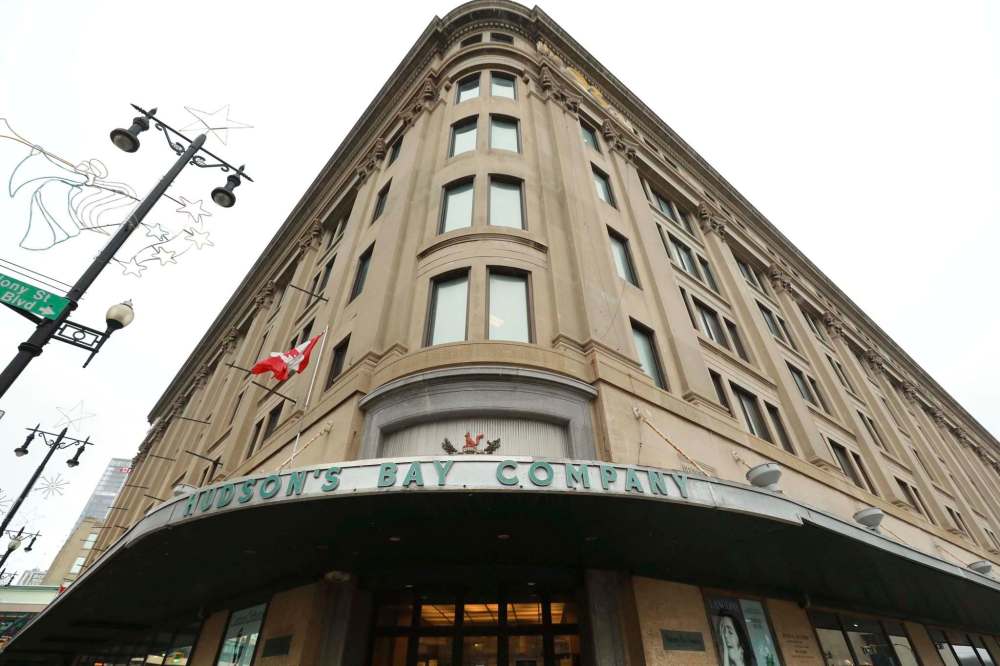
Posted:
Why is the downtown Bay building significant? What's happened inside over the years? What's next for the building?
City council’s decision in January 2019 to assign the building official heritage status has complicated matters. The designation protects the building from being demolished and ensures that several features — the exterior limestone walls, the outside canopy and the curved elevator lobby, among others — are preserved in future projects.
HBC said there are no immediate plans for the property after the doors close. The company has told the mayor it will work with the city and any interested parties that step forward.
HBC would “be open to anything” and said that it would not hold out for commercial reasons when working with potential developers, a company official said.
“Nairn was clear HBC was looking to work with the community on the next step for the building,” Bowman said. “I appreciate the sense of corporate stewardship and responsibility to the community they have shown.”

While no one would argue that Winnipeg’s downtown no longer functions as a retail hub, there are other elements of development that are going strong.
The area boasts more residents than ever, along with a steady pace of investment that includes True North Square, the Artis REIT apartment tower, Red River College’s Innovation Centre and the soon-to-open Inuit Art Centre expansion to the Winnipeg Art Gallery across the street from the Bay store.
“The overall health and growth in our downtown is going in the right direction,” Bowman said.
That said, having such a large building — it occupies a full city block — sitting empty would cause problems for any city.
Craig Patterson, a professor at the University of Alberta’s school of retailing, and the editor-in-chief of Retail Insider, said the demise of downtown Winnipeg’s last department store speaks to the suburbanization of retail.
“The department store concept is on the way out in North America,” he said. “There is great downtown development, but the actual retail side of things is not what it used to be.”
Patterson, who is researching the Hudson’s Bay Co. and has done work on the decline of retailing in U.S. city centres, said such a large empty building can be bad for downtown.
“We have seen it in other cities,” he said, “It can become a blight.”
Maureen Atkinson, senior partner at retail consulting firm J.C. Williams Group, said, “People will bemoan the loss of a store like that, but the reality is, the reason the store is being lost is because people are not shopping there.”
Hudson’s Bay Co. timeline
An overview of the Hudson’s Bay Co., from the 1670 signing of the Royal Charter, to early trading posts, through to changes in ownership and purchases of other companies, to today’s news of the downtown store closure.
1670 – The Hudson’s Bay Co., the world’s oldest continuously operating trading company, is born with the signing of the Royal Charter on May 2nd to Prince Rupert and “the Company of Adventurers of England trading into Hudson Bay.”
1821 – Hudson’s Bay Company and North West Company merge. At the time, HBC has 76 trading posts, NWC 97, with 1,983 employees.
1831 – Fort Garry is originally built in 1821 on a site near The Forks, where the Red and the Assiniboine rivers meet. A new fort, Lower Fort Garry is opened downstream in 1831. In 1835, HBC rebuilds the first fort in its original location and names it Upper Fort Garry.
1881 – Opens a modest dry goods, grocery, and hardware store at the corner of Winnipeg’s Main and York streets and produces its first mail order catalogue that provides access to the Canadian rural market.
1913 – Builds the first of its modern department stores in Calgary at the corner of 7th Avenue SW and 1st Street
1926 – Opens its Portage Avenue store in Winnipeg, the last of its six large urban stores
1965 – Adopts “the Bay” brand for retail
1970 – Queen Elizabeth grants the company a new charter and its head office moves from London, England, to Winnipeg. The year also marks the company’s 300th anniversary.
1974 – Establishes itself in the downtown core of Toronto with 260,000 sq. ft. of retail space and relocates its corporate office to Toronto.
1978 – Buys Zellers, Fields, and Simpsons the idea being for HBC to satisfy all potential customers through its three banners: Simpsons for the premium trade; The Bay for the middle market; and Zellers for the discount, mass market.
1987 – Officially moves its headquarters from Winnipeg to Toronto
1993 – The Bay acquires Woodward’s Department Stores and most of the company’s 26 stores are converted to Zellers or Bay stores. The net gain to HBC is 11 Bay stores and 10 Zellers stores in British Columbia and Alberta.
1998 – Zellers acquires Kmart Canada. Zellers now operates in 17 new Canadian markets and has a bigger presence in Canada than Walmart.
1999 – Launches Home Outfitters
2000 – Launches its web presence with www.hbc.com
2006 – Becomes a private U.S.-owned company when American Jerry Zucker acquires the company for $1.13 billion
2008 – National Realty and Development Corp. (NRDC) Equity Partners, which also owns the 47-store Lord & Taylor department store chain, buys HBC.
2011 – Sells Zellers leases to Target Corp., which acquires 220 leasehold interests for $1.825 billion. In 2012, HBC announces that the remaining Zellers stores will close by March 2013.
2012 – Returns to the public marketplace with an initial public offering of common shares.
2013 – Buys Saks Incorporated, which operates banners Saks Fifth Avenue and Saks OFF 5TH, for US $2.9 billion
2019 – After two decades of operation, HBC announces the closure of its Canadian Home Outfitters business in February.
2020 – Hudson’s Bay Co. shareholders voted overwhelmingly to approve the purchase of the company by executive chairman Richard Baker for $2 billion, talking it private once again.
2021 – Scheduled to close its iconic Portage Avenue store in downtown Winnipeg.
But downtown economic development officials are not without hope. Dayna Spiring, CEO of Economic Development Winnipeg, said she has seen renderings of what is possible in that building.
“I think the store closing simplifies the issue,” she said. “Now we are not having to deal with retail on the main floor.
“There are challenges for sure. It’s a big building. But it is a landmark. There are opportunities, given its size, to really do something unique on the inside.”
“People will bemoan the loss of a store like that, but the reality is, the reason the store is being lost is because people are not shopping there.”–Maureen Atkinson
Kate Fenske, who runs the Downtown BIZ, said news of the store’s impending closure was hard to take.
“We all have fond memories of going to that store,” she said. “I just bought a new rain jacket there that I love, this spring.”
While she said its closure marks a significant shift in the downtown landscape, it could also be an opportunity to start talking about the future.
“It’s important not to lose site of major investments that are happening in the heart of the city,” she said. “I think we need to look at this as a really good time to have a conversation in the community about what we want our downtown to be in the future.
“There is so much potential… and it’s important to keep that momentum going even during a pandemic.”
martin.cash@freepress.mb.ca

Martin Cash has been writing a column and business news at the Free Press since 1989. Over those years he’s written through a number of business cycles and the rise and fall (and rise) in fortunes of many local businesses.
Our newsroom depends on a growing audience of readers to power our journalism. If you are not a paid reader, please consider becoming a subscriber.
Our newsroom depends on its audience of readers to power our journalism. Thank you for your support.
History
Updated on Friday, October 2, 2020 2:28 PM CDT: Adds missing word "of" to sentence
Updated on Friday, October 2, 2020 3:09 PM CDT: Corrects square footage. A previous version of this story indicated the building was 515,000 square feet; that is the area of leasable space.
Updated on Friday, October 2, 2020 5:59 PM CDT: Updated throughout, added timeline.

